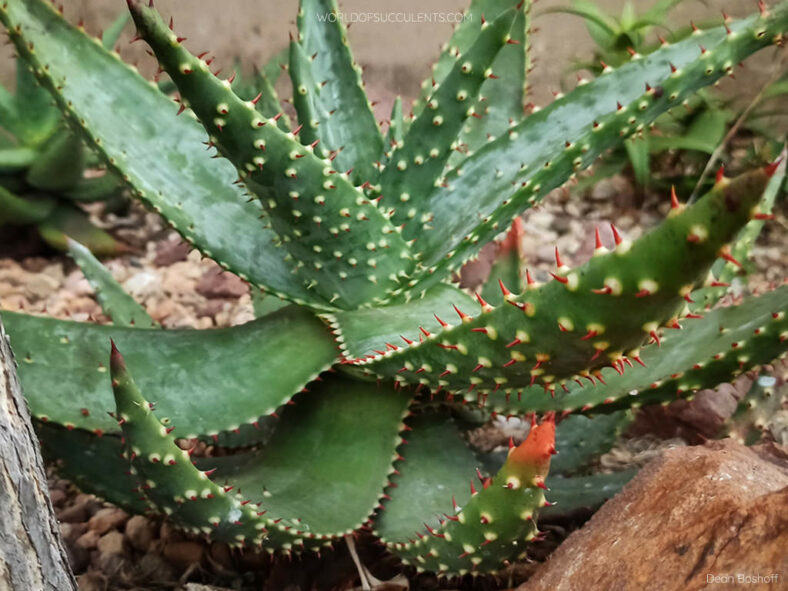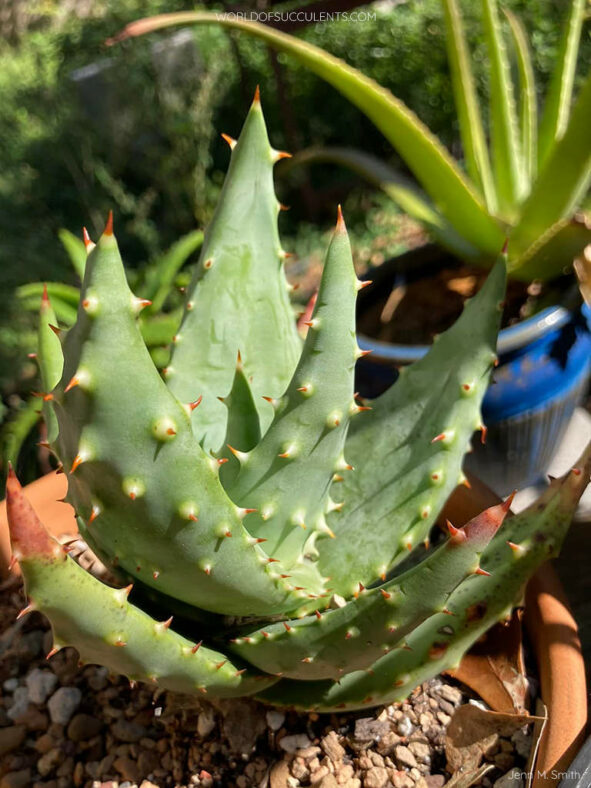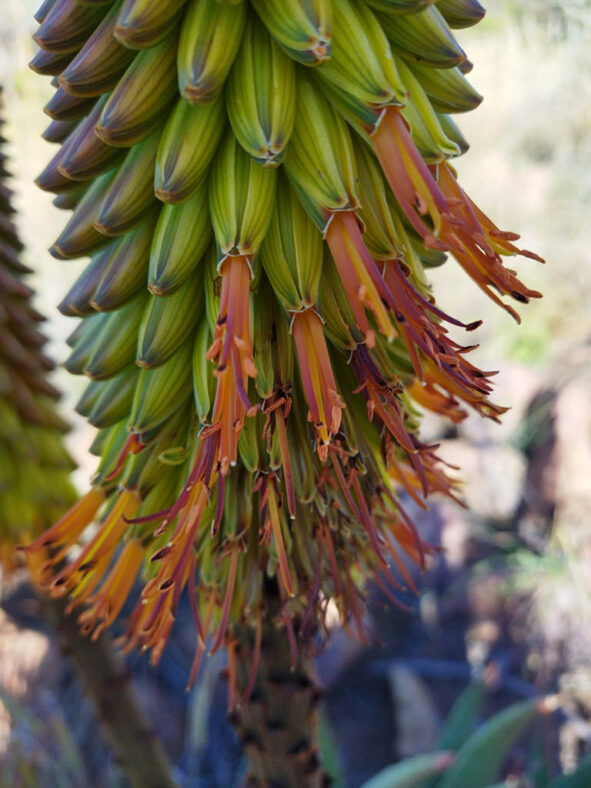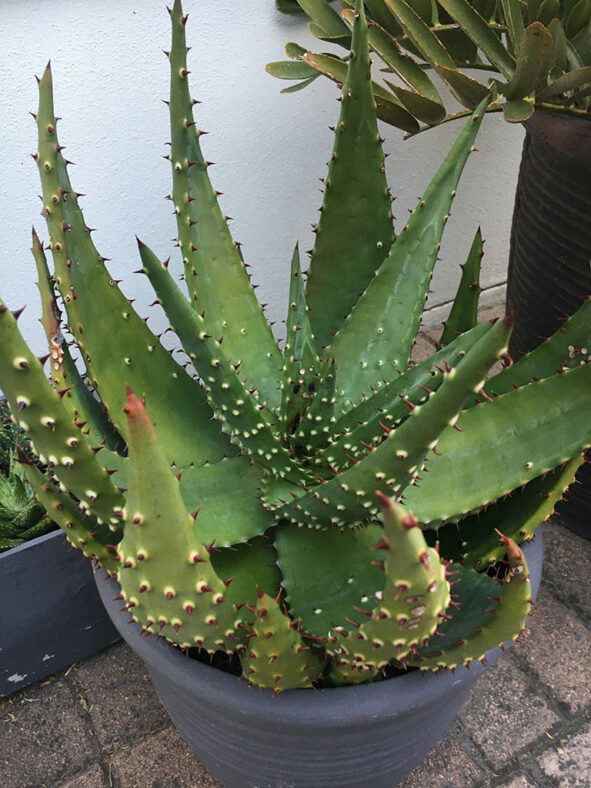Scientific Name
Aloe aculeata Pole-Evans
Common Name(s)
Prickly Aloe, Red Hot Poker Aloe, White-thorn Aloe
Scientific Classification
Family: Asphodelaceae
Subfamily: Asphodeloideae
Genus: Aloe
Etymology
The specific epithet "aculeata (a-kew-lee-AH-tuh)" means "prickly" and refers to the spines on the surfaces of the leaves and the teeth on its margins.
Origin
Aloe aculeata is native to South Africa (Limpopo and Mpumalanga) and parts of southern and central Zimbabwe and Mozambique. It grows on rocky outcrops in grassland and dry, sandy bushveld.
Description
Aloe aculeata is a succulent plant that forms a compact, stemless, usually solitary rosette of dull green to glaucous leaves with scattered, reddish-brown spines from the pale circular base on the lower surface, along the margins, and few usually near the apex of the upper surface. The rosette can grow up to 2 feet (60 cm) tall and nearly equal in diameter. The leaves are erect, often slightly incurved, and lance-shaped, terminating in a sharp spine, and can measure up to 2 feet (60 cm) long and 4.8 inches (12 cm) wide. They turn bronze in dry conditions.
The flowers are reddish-orange to yellow in the bud, orange to yellow at flowering, and can grow up to 1.6 inches (4 cm) long. They appear in dense, many-flowered racemes on a stout, simple or branched peduncle, usually in winter. The cylindrical racemes can reach up to 2 feet (60 cm) in length and 2.8 inches (7 cm) in diameter. The seed capsules are greyish and oblong and contain dark, narrowly winged seeds. They can grow up to 0.7 inches (1.8 cm) long and 0.4 inches (1 cm) in diameter.

How to Grow and Care for Aloe aculeata
Light: When growing A. aculeata indoors, place your plant in a window that gets plenty of bright indirect light. Rotate the pot once or twice a week so that all sides of the plant receive equal lighting. Outdoors provide light shade, especially during the hottest parts of the day.
Soil: Plant A. aculeata in a well-drained soil mix formulated for succulents or make your own. Drainage is essential because too much moisture around roots can cause root rot.
Temperature: This succulent grows best at temperatures between 50 and 85 °F (10 and 30 °C). When temperatures drop below 50 °F (10 °C), it is time to bring your plant back inside. A. aculeata can withstand temperatures as low as 25 °F (-3.9 °C). USDA Plant Hardiness Zones 9b to 11b: 25 to 50 °F (-3.9 to 10 °C).
Watering: This succulent does need regular watering but is very tolerant of drought conditions for short periods. Water deeply, but only when the soil is dry. Cut back on watering during the winter months. Do not let water stand in the rosettes.
Fertilizing: A. aculeata generally does not require fertilizer but may benefit from the extra nutrients. Feed with a fertilizer for succulents in spring and summer only. Be sure to follow the label directions.
Repotting: This plant is not particularly fast-growing and will rarely need repotting. To prevent it from becoming rootbound, repot it in the spring in a container a few inches larger in diameter every few years.
Propagation: Since A. aculeata has a solitary growth habit, it can be propagated only from seeds. For best results, sow seeds during the warm months.
Learn more at How to Grow and Care for Aloe.
Toxicity of Aloe aculeata
A. aculeata is not listed as toxic for people and pets.
Links
- Back to genus Aloe
- Succupedia: Browse succulents by Scientific Name, Common Name, Genus, Family, USDA Hardiness Zone, Origin, or cacti by Genus
Photo Gallery
Click on a photo to see a larger version.


